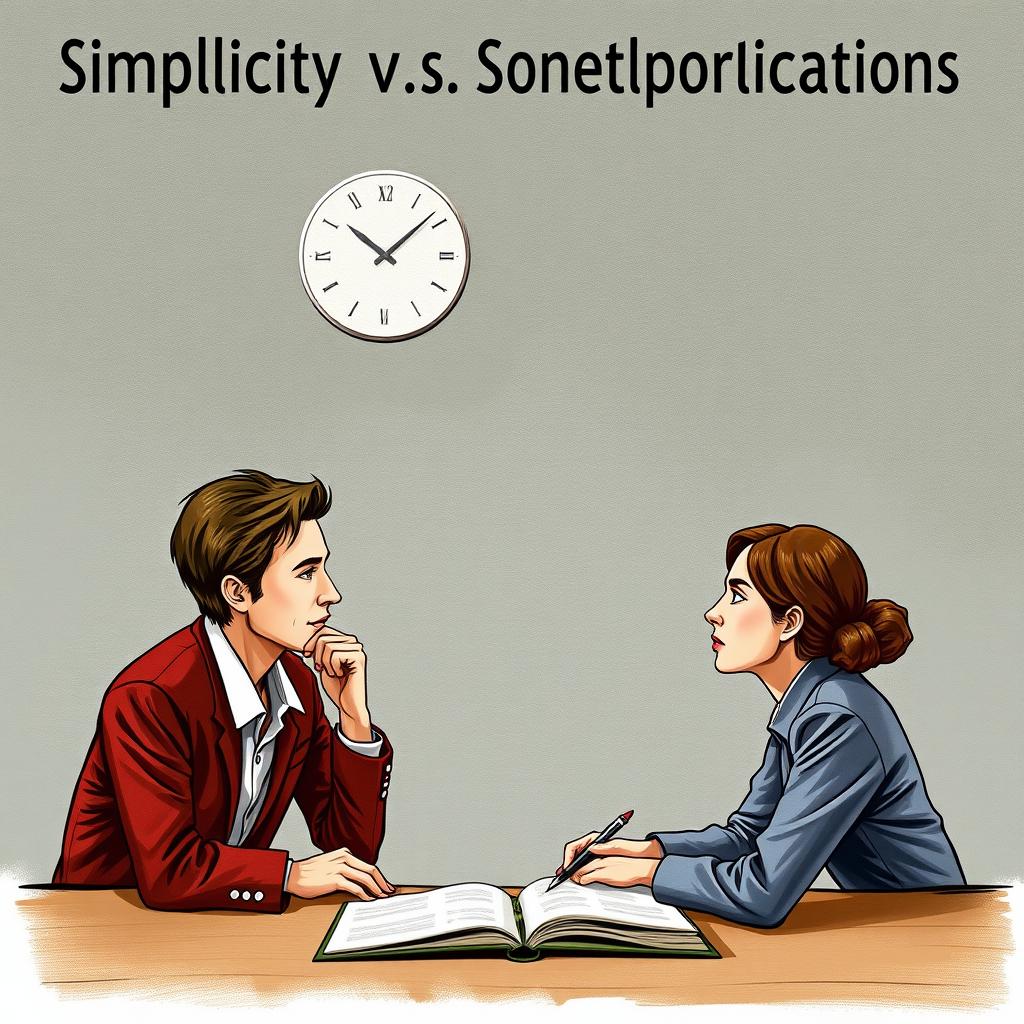Simplicity vs. Sophistication: The Art of Effective Professional Communication
Estimated Reading Time: 5 minutes
- Understand the balance between clarity and complexity in communication.
- Utilize plain language to enhance audience comprehension.
- Implement actionable steps to simplify your communication.
- Recognize that sophistication lies in clarity, not complexity.
Table of Contents
Introduction
In today’s fast-paced world, effective communication is more vital than ever. The way we convey messages, whether in emails, reports, presentations, or even casual conversations, profoundly impacts how our audience perceives us. Yet, a commonly held misconception persists: that sophisticated language is synonymous with superior communication. This belief can be a double-edged sword, leading professionals to misjudge the quality of their communication.
The reality is that while complex language may impress overtly, it often alienates audiences and obscures your core message. In our quest to appear knowledgeable, we may inadvertently cultivate an environment of misunderstanding. The key lies in striking a delicate balance between simplicity and sophistication, tailoring our words to suit the context, audience, and objective.
We face the challenge of demystifying the allure of complexity in professional communication. How do we break the cycle of jargon-laden messages? How do we motivate businesses and individuals to embrace the elegance of clear, concise language? This blog post aims to navigate these questions, offering insights into best practices for mastering professional communication.
At professionalizeitto.me, we empower you to transform how you communicate. By emphasizing the importance of clarity while maintaining authority, we’ll help you connect with your audience—whether they are your colleagues, clients, or stakeholders. Together, let’s embark on this journey to elevate your written and verbal communication, ensuring your messages resonate loud and clear.
Examples and Templates
To showcase the impact of simplicity and sophistication in communication, let’s explore practical examples and templates that emphasize clarity while maintaining professionalism.
1. The Power of Plain Language
When communicating new company policies or updates, clarity is paramount. Consider the following example:
Complex Version:
“The instantiation of synergistic paradigms necessitates a holistic realignment of extant operational modalities.”
Simple Version:
“This new policy requires us to change how we work.”
The latter is direct, actionable, and universally understandable, ensuring all employees grasp the message without confusion.
2. Creating an Engaging Email
When composing work emails, remember that your tone can affect how your message is received. Here’s a template to follow for a customer-oriented communication:
Subject Line: Update on Your Recent Inquiry
Template:
Hi [Recipient’s Name],
Thank you for reaching out to us regarding [specific issue]. We understand how important this matter is to you, and we want to assure you that we’re here to help.
After reviewing your inquiry, we’d like to inform you that [briefly explain the solution or update]. If you have any questions or require further clarification, please don’t hesitate to ask.
Best regards,
[Your Name][Your Position][Your Company]
This simple and clear approach fosters rapport and reassures the recipient.
3. Steps to Simplify Your Communication
To enhance your professional communication, follow these actionable steps:
- Know Your Audience: Research their background and understanding of the topic. Tailor your language accordingly.
- Define Your Objectives: Clearly establish what you want to communicate and what you hope to achieve.
- Choose Your Tone Wisely: Balance simplicity and sophistication as per the audience and goal.
- Utilize Plain Language: Avoid jargon and complex sentence structures wherever possible.
- Seek Feedback: Request insights from peers or target audience members on the clarity and effectiveness of your communication.
- Test for Comprehension: Use comprehension checks (like quizzes or simple questions) to ensure your audience understands your message.
For further insights, tools, and personalized AI support, we invite you to visit professionalizeitto.me. Whether you’re interested in subscribing to our newsletter, booking a consultation, or accessing premium resources, taking the next step towards mastering professional communication is crucial.
Conclusion
The art of effective communication lies in striking a balance between simplicity and sophistication. By focusing on clarity, you not only improve the effectiveness of your messages but also build trust with your audience.
As professionals, we must take care not to succumb to the illusion that complex language equates to intelligence. Instead, let’s embrace the notion that true sophistication resides in the ability to communicate with depth while maintaining clarity.
Remember, at professionalizeitto.me, we’re here to help you navigate this journey. Together, let’s transform your written communication, ensuring your messages resonate with your audience and propel your message forward.
FAQ
Q: What is the main focus of effective professional communication?
A: The main focus is to balance simplicity and sophistication to ensure clarity and understanding in your messages.
Q: How can I achieve simplicity in my communication?
A: Utilize plain language, know your audience, define your objectives, and seek feedback to enhance clarity.
Q: Where can I find more resources on communication strategies?
A: Visit professionalizeitto.me for tools and insights on effective communication.


